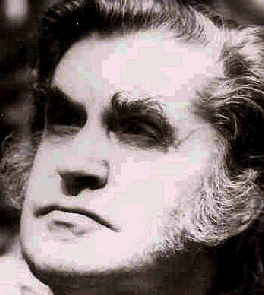By Gigi Yellen-Cohn, JTNews Correspondent
He was a force to be reckoned with, this large-voiced man, the composer Bonia Shur.
When Shur died last August at the age of 89, Rabbi David Ellenson, president of the Hebrew Union College-Jewish Institute of Religion, paid him tribute for having “composed for and taught hundreds of rabbinical students in Cincinnati and cantorial students on the Jerusalem and New York campuses.” Before becoming the director of liturgical arts at the Reform rabbinical school’s Cincinnati campus, Shur placed his unique musical mark on Seattle’s Reform community as music director of Temple De Hirsch.
On Friday, April 5 Temple Beth Am’s choir will pay tribute to the legendary creative force that was Bonia Shur. The tribute includes a presentation by Shur’s wife, the equally forceful and creative choreographer Fanchon Shur, whose work often combined with his.
Shur’s “life and musical expression reflected the trajectory of 20th-century Jewish experience, from the destruction of the Shoah to the birth of Israel and the flowering of Jewish culture in America,” Ellenson noted. “Together with Fanchon’s gifted choreography, his creativity and vitality nurtured the academic and spiritual journeys of our students and enriched the larger community.”
Shur’s biography reads like an adventure movie. Born in Latvia in 1923 to a musically talented Jewish family, Shur wound up getting drafted into the Russian army, surviving by directing musical ensembles during the war. After the war, while serving as a Russian officer in occupied Germany and Austria, he escaped to Poland, joined the Jewish underground, and in 1949 moved to Israel. He lived on Kibbutz Netzer Sereni, studied with the foundational Israeli composer Paul Ben-Haim, and established his lifelong reputation as a supremely gifted arranger.
Shur moved to the United States in 1960 and worked in Hollywood. Among his projects: Collaborating on the score for the award-winning 1966 film, “The Russians Are Coming! The Russians Are Coming!”
Then came Seattle.
Shur was tapped to succeed Temple De Hirsch’s legendary longtime music director Samuel Goldfarb, who retired in 1968. His dramatically different approach to the job, both musically and personally, left powerful impressions on congregants and community members. Lucy Spring, now volunteer coordinator at the Caroline Kline Galland Home, worked as assistant to both men.
“Mr. Goldfarb was very traditional,” Spring said, picking her words carefully. “Bonia was the opposite. He did a lot of writing in dissonance.”
Spring remembers Shur’s creativity and the special programs he did for the temple youth. “Along with his wife, he created a music and dance program,” she said. “Her dancing troupe was students from the temple.” The Shurs lived in the Woodridge neighborhood of Bellevue during their six years at Temple de Hirsch (which merged and became known as Temple De Hirsch Sinai in 1971). With sideburns some have described as “California-shaped,” the charismatic Shur embodied the spirit of the times.
In 1974, Shur was appointed director of liturgical arts at the Cincinnati campus of HUC-JIR. From 1974 to 2003, as “a major musical force in the Reform Jewish movement of North America,” as Ellenson put it, he “revolutionized the sound of liturgical music with emphasis on rhythm to text through contemporary sensory interpretation of worship practice. He composed arrangements in combination for cantor, choir, with diverse instrumentation. With over 300 published compositions to his credit, Shur’s prolific output for the High Holidays, life cycle, Sabbath, and festivals has influenced every Reform Jewish congregation in North America.”
In Cincinnati, Shur collaborated musically with Christian and Muslim communities. He continued composing and arranging up to the end of his life. At a tribute concert one year ago in Cincinnati marking Shur’s 88th birthday, he was celebrated as a musical revolutionary and dubbed the creator of a “Nusach America,” a now-classic set of uniquely American synagogue tunes.
Among his many works beyond the synagogue, Shur turned Seattle writer Robert Fulghum’s book “Uh-Oh: Some Observations from Both Sides of the Refrigerator Door” into a 1991 composition for 40-piece orchestra. The work was part of the Minneapolis Chamber Symphony’s commissioned “Variations on a Theme From Kindergarten,” based on the three of Fulghum’s bestselling books. The orchestra tuned not to the oboe, but to the hum of the refrigerator.
Temple Beth Am music director Wendy Marcus, who is organizing the April 5th Shabbat tribute, studied with Shur in a summer intensive in Cincinnati. She says that as far as she can tell, the Seattle tribute seems to be the first memorial tribute to Shur anywhere.
Marcus praises Shur not only for his compositional skills, but also “as a brilliant arranger, an arranger for the ages.
“He was a very adamant as a conductor,” Marcus said. “When he worked with a choir, he had a vision and he wanted people to sing his vision. It really felt like we were interacting with one of the greats.”
